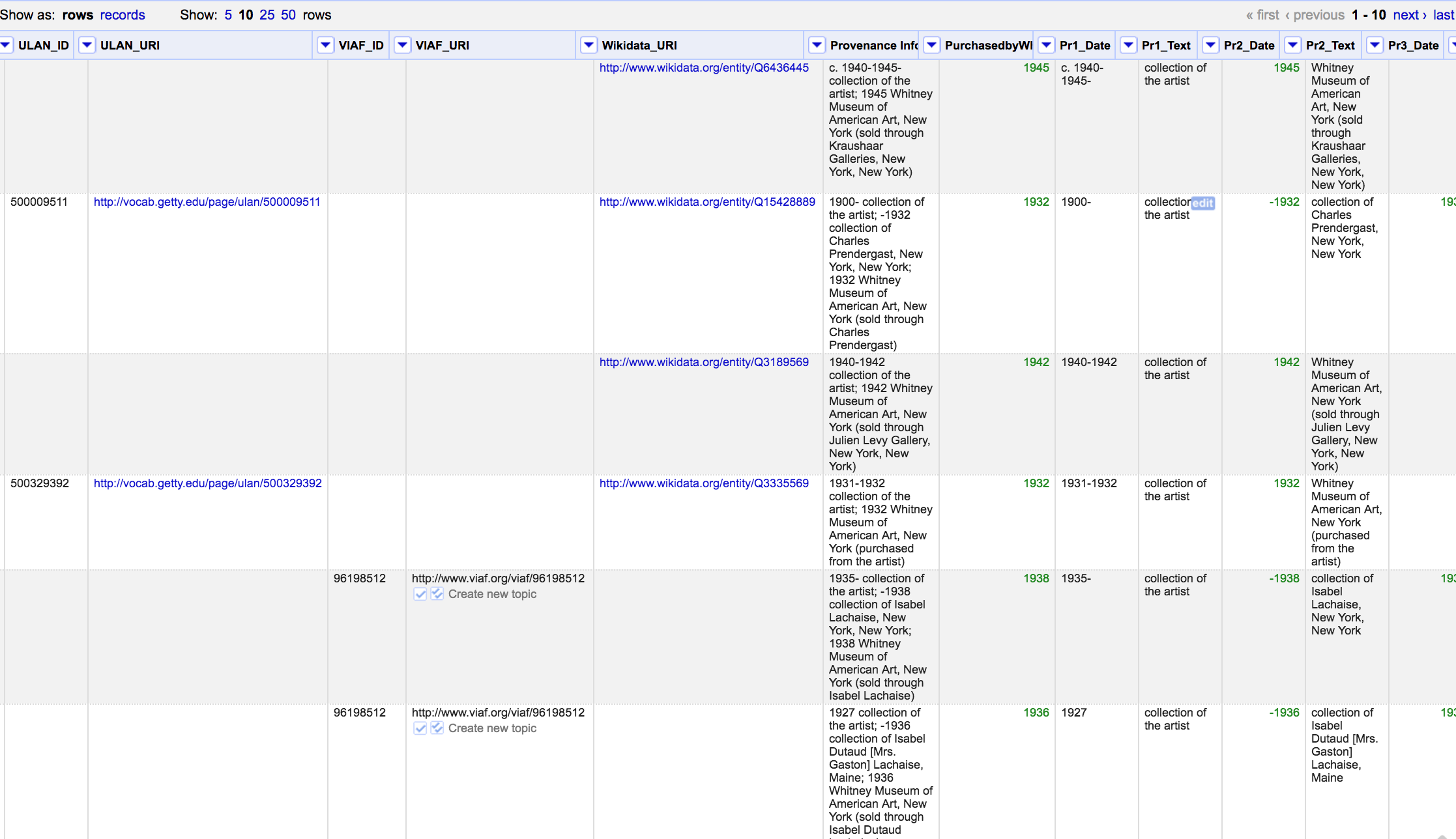Overview of On-Site Work
My work at the Whitney was largely self-directed. I would meet with Farris Wahbeh, the Director of the Whitney’s Research Resources Department, at the Whitney’s Frances Mulhall Achilles Library once a week to discuss the status of the project, but otherwise worked independently on a different floor of the museum. I also met with Pratt Professors Cristina Pattuelli and Matt Miller a few times every semester to discuss the more technical side of my work.
I had no regularly assigned duties at the Whitney, so my day-to-day work primarily consisted of independent research and experimentation. I worked at a computer terminal near the Whitney’s Collection Documentation and Registrarial offices, where I had access to TMS, the museum’s object database. I used a Google Doc to keep a weekly journal of my project work, which also served as a scratchpad and a place to record my observations throughout the day.
The direction of my project work at the Whitney was also largely self-determined, although it was influenced by the work of Joshua Dull, Pratt’s previous LOD Fellow. Joshua had limited the focus of his project work to the Whitney’s Founding Collection, the first 1,000 objects purchased by the museum under its first director, Juliana Force. At Farris’ suggestion, I also used the Founding Collection as a sample dataset for my project work. During his time at the Whitney, Joshua experimented with creating URIs, or Unique Resource Identifiers, for the artists and objects in the Founding Collection. As one possible future direction for Whitney Linked Data project work, Joshua had suggested exploring other types of data contained in TMS, in particular information like object provenance and exhibition history. My research into how other art museums have represented provenance when publishing their collections as linked data led me to explore the CIDOC Conceptual Reference model, which ended up becoming the central focus of my work.
Sample Project Work
Concept Map
At Professor Pattuelli’s recommendation, I created this concept map to illustrate my proposed structure for publishing the Whitney’s URIs:
Google Sheets and OpenRefine Data
I worked extensively in Google Sheets and OpenRefine with collection data exported from TMS as CSV files.
At one point, I experimented with splitting four master TMS CSV files into separate sheets for each CIDOC-CRM entity class. I ultimately didn’t end up using the sheets, but splitting them was a helpful exercise in understanding CIDOC’s classes and properties.
For this file, containing data on Acquisition-Related Constituents (people who the Whitney bought art from), I used OpenRefine to standardize the spellings of names, split dates contained in a single text column across multiple columns, and reconcile names to name authority files on sites like the Getty Union List of Artist Names (ULAN):
Tableau Visualization
In order to represent the distribution of provenance sources of the Whitney’s Founding Collection, I used Tableau to create the following visualization:
